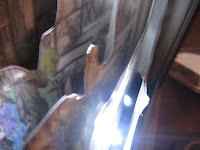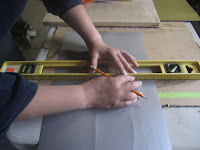sound file, :))
In addition, I used the sound files I created with Audacity and had them ready to play with the corresponding Arduino sketch. In this way, I had no problem operating the show for the presentation. Thus, everyone saw a rudimentary but successful show, :))
I enjoyed building and working with my little project. I am purchasing my own Arduino unit and I am going to master the serial port problem!! In addition, I am planning to further develop my idea with a final goal of possibly marketing my mini exhibit as a learning tool for the classroom. Or as a craft kit with the Arduino unit. The marketing needs more examination, :)))
For now, I am proud of my accomplishments in this course. Starting this course as a complete techno-phobe and ending it with a feeling of comfort when it comes to technology, although a bit of frustration, I feel I have come a long way!!! Starting this project from scratch was challenging but a lot of fun, :)) Who knows, maybe some day I will actually create my hologram library book!!!!





























